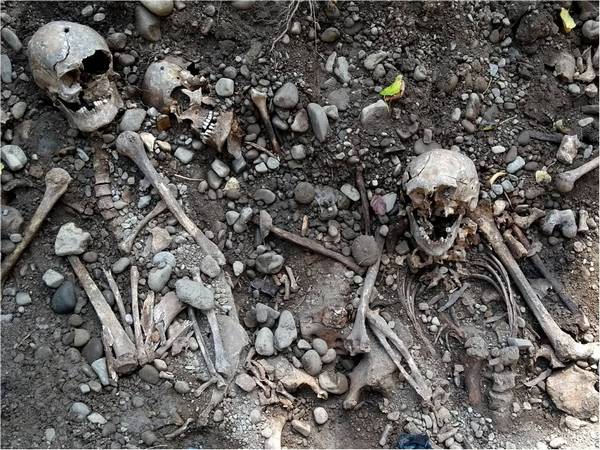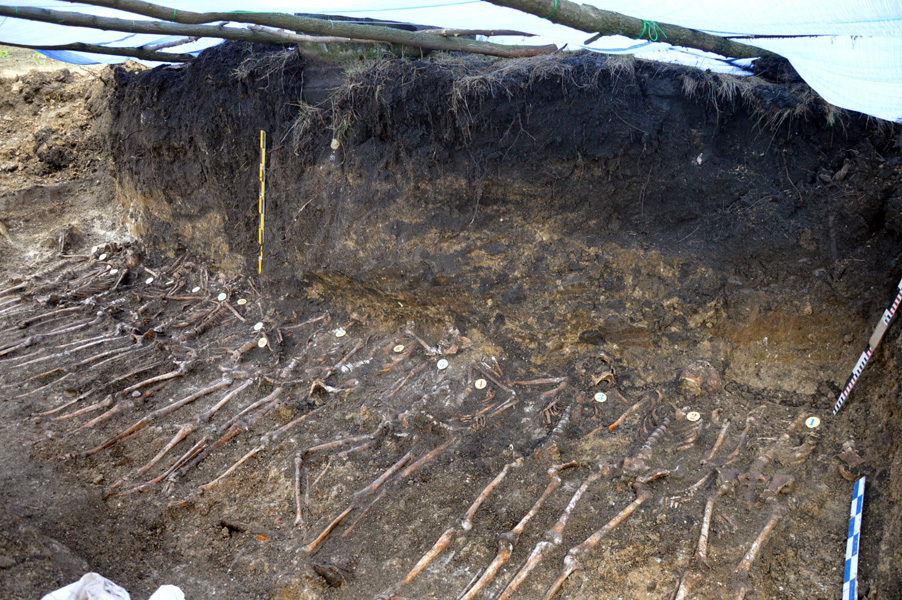On November 24, Ukraine marks Holodomor remembrance day, commemorating the millions of Ukrainian peasants who died in result of an artificial famine during Stalin’s repressions 85 years ago, in 1932-1933.
The Holodomor was one of Stalin’s intentional policies regarding the Ukrainian population, an act of coercion and intimidation, an answer to the disobedience and resistance of Ukrainians against the coerced collectivization with which the totalitarian empire of the Soviet Union was to be built.
According to the research results of the Ptukha Institute of demography and social studies, 3 million 530 thousand people died from Holodomor in 1933. In 1932, 250 thousand died from starvation, and in 1934 – about 160 thousand. Overall, in three years – 3.9 million died, and 0.6 million more of the unborn, or, as they are also referred to, “indirect losses.” I.e., overall 4.5 million Ukrainians were lost due to the Holodomor of 1932-1933.
Find out about the Holodomor at a glimpse: Holodomor: Stalin’s genocidal famine of 1932-1933 | Infographic
Throughout decades, the topic of the Holodomor was tabooed. In Soviet times, the communist crime was hushed up. Only on 28 November 2006, Ukraine’s parliament recognized the Holodomor as genocide. Many other governments did the same.
Genocide refers to intentional actions aimed at the total or partial destruction of particular groups of the population or entire nations based on national, ethnic, racial, religious or religious motives. Examples of genocides include the Holocaust, the Armenian Genocide in Türkiye (1915-1923), the genocide in Rwanda (1994), the genocide in Srebrenica (1995).
One of the coauthors of the legal definition of genocide, Rafael Lemkin, considered Holodomor a classical example of Soviet genocide, the longest and widest attempt to Russify and destroy the Ukrainian nation.
We decided to take a look at the governments that had officially recognized the famine as genocide.
Out of the 195 countries of the world, 23 UN countries and Vatican city recognize the Holodomor as genocide on the state level: Australia, Brazil, Canada, Colombia, Czech Republic, Ecuador, Estonia, Georgia, Germany, Hungary, Ireland, Latvia, Lithuania, Mexico, Moldova, Paraguay, Peru, Poland, Portugal, Romania, Ukraine, USA, Vatican City.
A number of separate cities and regions have recognized the Holodomor as genocide as well. So do the Catholic, Ukrainian Greek Catholic, Constantinople Orthodox Church, Ukrainian Orthodox Church of Kyiv Patriarchate, Ukrainian Orthodox Church of the Moscow Patriarchate, Ukrainian Autocephalous Orthodox Church.
Other countries and institutions have issued statements recognizing Holodomor as tragedy or crime against humanity but did not use the word “genocide.” For instance,
The European Parliament in a resolution from 2008 “recognises the Holodomor (the artificial famine of 1932-1933 in Ukraine) as an appalling crime against the Ukrainian people, and against humanity.”
The United Nations in a joint statement from 2003 refers to Holodomor as a “national tragedy of the Ukrainian people.”
The Parliamentary Assembly of the Council of Europe in a resolution from 2010 “strongly condemns the cruel policies pursued by the Stalinist regime, which resulted in the death of millions of innocent people, as a crime against humanity.”
The Organization for Security and Cooperation in Europe in a resolution from 2008 states that Holodomor was a “mass starvation brought about by the cruel deliberate actions and policies of totalitarian Stalinist regime.”
The United Nations Organization for Education, Science and Culture in a resolution from 2007 recognizes Holodomor as the “national tragedy of the Ukrainian people, caused by the cruel actions and policies of the totalitarian regime.”
Argentina – in 2003, the Senate of Argentina decreed to remember millions of men, women and children who lost their lives as a result of deliberate deprivation of food during the great famine in Ukraine in 1992-1933.
The Czech Republic – in 2007, the Chamber of deputies of Czech Republic Expressed deep sympathy to relatives of millions of people who became victims of the Holodomor in Ukraine of 1932-1993, which was specially planned by the Stalin regime.
Slovakia – in 2007, the National Counsel (Parliament) of the Slovak Republic adopted a declaration recognizing the Holodomor of 1932-1933 in Ukraine as an act of annihilation of mankind by the Stalin totalitarian regime.
Read also:
- So how many Ukrainians died in the Holodomor?
- Documents reveal Soviet repressions against those resisting Holodomor genocidal famine
- Why the Holodomor is genocide under UN convention: On Anne Applebaum’s Red Famine
- Ukrainians suffered three terror famines under the Soviets not just one
- Stalin’s terror famine killed Ukrainians at twice the rate of other nationalities, HURI study says
- The Holodomor of 1932-33. Why Stalin feared Ukrainians
- Stalin’s genocidal Holodomor campaign of 1932-33. What we know vs the denialist lies
- Stalin starved populations to death to russify Ukraine, North Caucasus and Kazakhstan, statistics show
- On Holodomor denial, and fisking a denialist Russian professor of History
- History, Identity and Holodomor Denial: Russia’s continued assault on Ukraine
- The liars of Kremlin dance on the graves of famine victims








